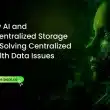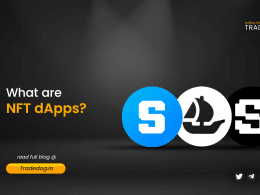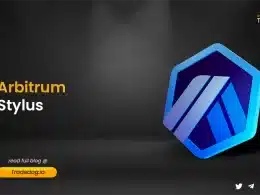Quick Links
The blockchain landscape is constantly evolving with new projects frequently vying to dethrone established giants like Ethereum and Bitcoin. One of the recent entrants generating considerable buzz is the Sui Network, a Layer-1 blockchain that has quickly caught the attention of the crypto community. Sui stands out due to its innovative approach to transaction processing, its use of the Move programming language, and a suite of unique features designed to enhance scalability, security, and user experience.
This blog will explore what makes Sui special and whether it has what it takes to thrive in an increasingly competitive market.
Parallel Transaction Processing
At the core of Sui’s architecture is its ability to process multiple transactions simultaneously – a stark contrast to traditional blockchains like Ethereum and Bitcoin, which process transactions sequentially. This feature is analogous to a multi-lane highway, where multiple vehicles can move at the same time, making the entire system more efficient.
To achieve this, Sui employs a two-part system known as “Narwhal and Bullshark.” Narwhal is responsible for organizing transactions into batches, while Bullshark orders these batches before they are finalized. This parallel processing approach not only enhances the network’s scalability but also significantly boosts its transaction throughput. While traditional blockchains struggle with congestion and high fees during peak usage, Sui’s model is designed to handle high volumes of transactions with ease, potentially processing hundreds of thousands of transactions per second.
Sui’s Object-Centric Data Model
Sui’s object-centric data model is another key differentiator. Unlike Ethereum, which uses an account-based model to track the state of the blockchain, Sui organizes all data into distinct “objects.” Each object in Sui holds information about ownership, transaction history, and other defining characteristics. This model simplifies state management and allows for the efficient parallel processing of transactions involving different objects.
This approach also reduces the complexity associated with conflict management, a challenge faced by other blockchains that support parallel processing, like Solana. By bypassing these complexities, Sui’s object-centric model offers a streamlined and potentially more scalable solution. This innovation positions Sui as a strong contender in the race to build the most efficient blockchain.
Sui Move
Sui Move, a customized version of the Move programming language originally developed for Facebook’s Diem project, is tailored specifically for Sui’s object-centric model. Sui Move emphasizes security and immutability, treating resources like tokens as unchangeable entities. This approach prevents issues like double-spending and reentrancy attacks, which have plagued other blockchain networks.
The Move bytecode verifier is another critical security feature built into Sui’s ecosystem. This verifier ensures that any code deployed on the Sui blockchain meets stringent security standards before it goes live. This rigorous approach to security makes Sui an attractive platform for developers looking to build decentralized applications (DApps) that require high reliability and security.
Dynamic NFT Standards
Non-fungible tokens (NFTs) have become a cornerstone of the blockchain world, and Sui has introduced dynamic NFT standards that support evolving use cases. Unlike traditional NFTs, which are static and unchangeable, Sui’s NFTs are treated as objects that can change behavior over time. This allows for greater flexibility and composability, enabling NFTs to be combined into more complex assets or updated with new attributes after their creation.
For example, an NFT ticket on Sui could be updated to show that it has been used, or digital artwork could evolve over time, offering new experiences to its owner. Additionally, Sui’s NFT standards include automatic royalty payments, ensuring that creators receive a percentage of future sales directly through the blockchain, without the need for external platforms. This feature could make Sui particularly appealing to artists and creators looking to monetize their digital work in innovative ways.
Source – Sui
Other Sui Features
Sui also likes to advertise its out-of-the-box solutions, zkLogin and DeepBook, which aim to simplify user authentication and lower the barrier to entry for building DeFi on the chain.
zkLogin
Sui also aims to lower the barrier to entry for new users with its zkLogin feature. Traditionally, interacting with blockchain applications requires setting up a wallet, which can be a daunting task for those unfamiliar with the technology. zkLogin simplifies this process by allowing users to log into Sui-based apps using their existing Web2 credentials, such as Google or Twitch accounts.
While this may seem counterintuitive to the decentralized ethos of blockchain, zkLogin leverages zero-knowledge proofs to securely link Web2 credentials to Sui addresses. This means that users can enjoy the convenience of logging in with familiar credentials while still benefiting from the privacy and security of a blockchain-based system. This feature could be particularly useful for onboarding new users who are hesitant to navigate the complexities of traditional blockchain wallets.
DeepBook
In the decentralized finance (DeFi) space, liquidity is king. Sui addresses this critical need with DeepBook, an open-source central limit order book (CLOB) that acts as a shared liquidity layer within the Sui ecosystem. DeepBook provides the infrastructure necessary for reliable trading, allowing developers to focus on building innovative features rather than managing basic trading logic or bootstrapping liquidity.
DeepBook ensures that each asset has its own liquidity pool, preventing interference between trading pairs and enabling smoother, faster transactions. This could make Sui a go-to platform for DeFi developers looking to create new financial products without the overhead of building from scratch. By offering this out-of-the-box solution, Sui positions itself as a blockchain that is not only technically advanced but also developer-friendly.
SUI Token
The native token of the Sui Network, SUI, plays a crucial role in maintaining and securing the network. SUI is used to pay for transaction fees, participate in staking, and engage in governance decisions. Staking SUI contributes to the network’s security and integrity, with stakers earning rewards in return. This model is similar to earning interest on a term deposit at a bank, providing an incentive for SUI holders to support the network.
Moreover, SUI holders have a say in the future direction of the network through governance voting. The more SUI a holder has, the greater their influence on the network’s decisions. With a maximum supply of 10 billion tokens, SUI’s release schedule is carefully managed to maintain a balanced ecosystem and encourage long-term growth.
Key Statistics
Here are a few key metrics that highlight the network’s performance and adoption. These numbers provide a snapshot of Sui’s activity, growth, and the economic impact within its ecosystem:
- Average 30-Day Transactions Per Second (TPS): 38
- Daily Active Addresses: 360K+
- Daily Transactions: 2.5 Mn+
- Q3 2024 Fees Generated: $352K
- Total Value Locked (TVL): $622 Mn
- Market Cap (Circulating): $2.2 Bn
The Road Ahead
Despite its promising features, Sui faces significant challenges in a crowded market. Competing against established and emerging Layer-1 blockchains like Solana and Ethereum, as well as new EVM chains like Monad and MegaETH, will be no easy task. Sui’s success will depend on its ability to attract developers, secure partnerships, and build a vibrant ecosystem that can rival its competitors.
However, with over $622 Mn in total value locked (TVL) and backing from major investors like a16z, Coinbase, and Jump, Sui has a strong foundation to build on. Its focus on scalability, security, and user-friendly features could give it an edge in the race to become the blockchain of choice for developers and users alike. Sui presents a compelling case for why it could be a major player in the blockchain space. However, the journey ahead is fraught with competition, and only time will tell if Sui can live up to its potential and carve out a significant share of the market.









